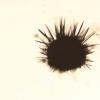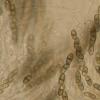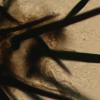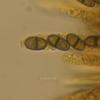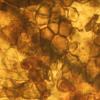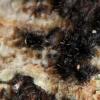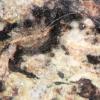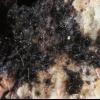
28-10-2025 19:33
 Nicolas Suberbielle
Nicolas Suberbielle
Bonjour à tous,Je voudrais votre avis sur cette r

25-11-2016 13:54
 Stephen Martin Mifsud
Stephen Martin Mifsud
Hi, I found numerous seeds of Washingtonia robusta

28-10-2025 22:22
 Bernard Declercq
Bernard Declercq
Hello.I'm searching for the following paper:Punith

28-10-2025 15:37
Carl FarmerI'd be grateful for any suggestions for this strik

28-10-2025 11:29
 Tanja Böhning
Tanja Böhning
Hello, I found this very small (ca 0,5mm) yellow

27-10-2025 00:34
 Francois Guay
Francois Guay
I found this strange species in Québec,Canada, gr

27-10-2025 15:29
 Michel Hairaud
Michel Hairaud
Bonjour à tous, Avec Elisabeth Stöckli nous avo
Black, setose on Salix
Zuzana Sochorová (Egertová),
28-06-2022 22:07
 Hello,
Hello,I would welcome some help with these little ascomycetes growing on a fallen twig of Salix, accompanied by Diatrype bullata and Orbilia cf. tremulae. Czech Republic, 200 m a.s.l..
Black, globose, setose fruit bodies (that one in the photo is 280 µm broad).
Setae up to 170 µm long, pointed, black, thick-walled, base broadened.
The wall formed by t. angularis.
Asci 8-spored, IKI-, MLZ-.
Ascospores one-septate, each half containing a guttule, (7.1) 7.2-8.6 (8.9) × (3.1) 3.2-4.2 µm,
Q = 1.8-2.8
Me = 8 × 3.6 µm
I though it could be Capronia, and Gernot Friebes´s key from ascomycete.org led me to C. inconspicua. However, its ascospores should have a different shape. I was adviced by Bjorn Wergen Capronia isn´t the right genus for my fungus. Does somebody have an idea where could this asco belong to?
Zuzana
Hans-Otto Baral,
29-06-2022 08:05

Re : Black, setose on Salix
I think this is sordarial and a member of Lasiosphaeriaceae or Helminthosphaeriaceae. Perhaps related to Helminthosphaeria?
Alain GARDIENNET,
29-06-2022 09:25
Re : Black, setose on Salix
Surely.
Zuzana Sochorová (Egertová),
29-06-2022 20:46

Re : Black, setose on Salix
Thank you, Zotto and Alain.
Nevertheless, I tried to use the key to Helminthosphaeriaceae by Andrew Miller et al. 2014, but found no good option. I would come to the point 15, and then nothing is fitting. I also tried alternative ways, but it also didn´t bring any acceptable result.
Nevertheless, I tried to use the key to Helminthosphaeriaceae by Andrew Miller et al. 2014, but found no good option. I would come to the point 15, and then nothing is fitting. I also tried alternative ways, but it also didn´t bring any acceptable result.

